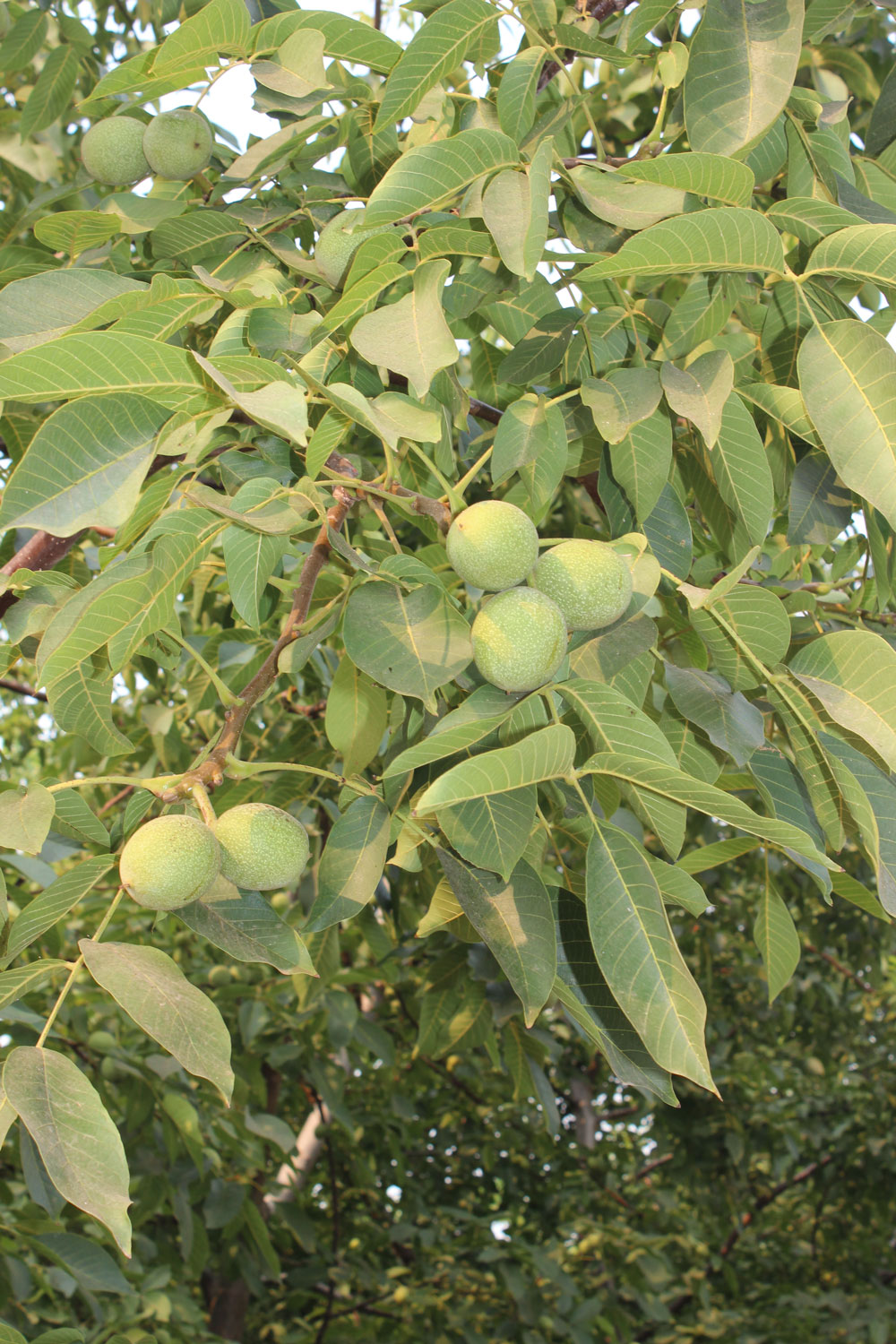Monitoring walnut orchards for insect pests is important in the weeks leading up to harvest.
The four major pests most likely to affect nut quality during the summer are codling moth, navel orangeworm (NOW), walnut husk fly (WHF) and mites.
Dr. Jhalendra Rijal, University of California Cooperative Extension (UCCE) Integrated Pest Management Advisor for northern San Joaquin Valley, said July normally marks the early part of the second flight of codling moth (CM).
Growers should continue use of codling moth pheromone-based traps (1x lures) to track flights, set biofix dates, and determine generations. The challenge in monitoring for this pest is nearby use of mating disruption pheromone will lead to trap shutdown. Options for traps are pheromone plus kairomone based lures (CM pheromone combined with pear ester kairomone, CMDA) to trap both males and females. The best way is both lure types, pheromone and CMDA combo.
University of California (UC) Integrated Pest Management (IPM) guidelines recommend using nut sampling in addition to trapping in walnut orchards. Rijal noted that trap counts for codling month can be misleading. Nuts should be sampled especially around the end of each CM generation for nut damage evidenced by frass (excrement). IPM Guidelines recommend examining 1,000 mid-canopy nuts (20 nuts per tree on 50 trees per block) for signs of codling moth larval entry.
Early varieties of walnuts may be vulnerable to the 2nd generation navel orangeworm damage in July, but the major risk is from the 3rd and 4th flights. Although there are some differences in susceptibility, all walnut varieties are susceptible to navel orangeworm damage after the husk-split. Nuts that are damaged by codling moths, blights, sunburn, etc. are susceptible to navel orangeworm attack throughout the season.
UCCE advisors report they have little information on the effectiveness of monitoring traps for NOW in walnuts. Monitoring in combination with history of damage from previous years, any other potential sources of NOW in the area, all together help pest control advisors (PCAs) and growers to manage this pest.
Historical damage from walnut husk fly in a walnut orchard is a good indicator that this pest is present. There are no degree-day models to use to time sprays, but monitoring for this later season pest should begin no later than June 1 in the Central Valley. Yellow sticky cards supercharged with ammonium carbonate should be hung mid canopy and checked two to three times a week. Trapping is not a useful method in detecting walnut husk fly activity in the orchard, Rijal said, but treating right after the first female WHF with eggs is trapped is advised, especially in the orchards with the history of damage. Continued monitoring is critical as husk fly has an extended emergence spanning a few months in the summer. Stings on nuts is not the preferred monitoring method as damage has already occurred.
Monitoring traps throughout the season is recommended.
Mites can develop high populations as summer temperatures rise. Monitoring should begin in June. Hot temperatures and dry, dusty conditions promote mite infestations. Light bronzing on leaves is an indication of increasing populations. Select 10 random trees and inspect mites and predatory presence from the minimum of 10 leaves representing lower and upper portion of the canopy from those trees. UC IPM guidelines advise that monitoring should continue through August at weekly intervals. This can be done by inspecting 10 leaflets on each of 10 trees looking for spinning mites, predator mites and six spotted thrips. It is a good practice to keep weekly monitoring record not only for mites, but for other insects as well. Predator mites can keep web-spinning mite populations in check. Six spotted thrips can also prey on mites, but populations may not build until later in the season after mites have caused economic damage.
Treatment thresholds depend on whether organophosphate or pyrethroid insecticides have been used as they can wipe out predator mite populations. More information on mites in walnuts can be found at http://ipm.ucanr.edu/PMG/C881/walnut-mitemon.pdf

Cecilia Parsons
Cecilia Parsons has lived in the Central Valley community of Ducor since 1976, covering agriculture for numerous agricultural publications over the years. She has found and nurtured many wonderful and helpful contacts in the ag community, including the UCCE advisors, allowing for news coverage that focuses on the basics of food production.
She is always on the search for new ag topics that can help growers and processors in the San Joaquin Valley improve their bottom line.
In her free time, Cecilia rides her horse, Holly in ranch versatility shows and raises registered Shetland sheep which she exhibits at county and state fairs during the summer.
















